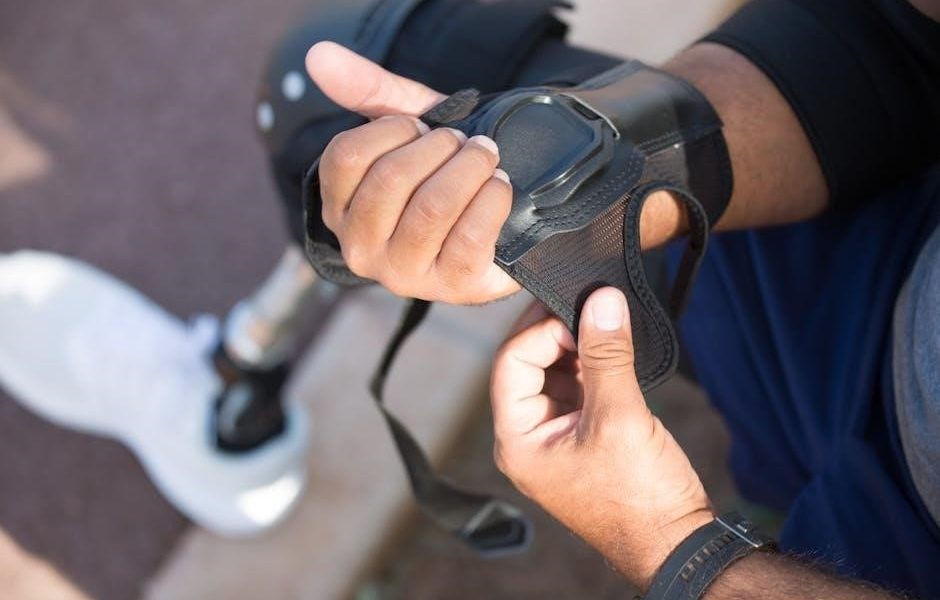Overview of the TLSO Brace
A TLSO (Thoraco-Lumbo-Sacral Orthosis) is a custom spinal brace designed to immobilize and support the spine, typically used after surgery or for conditions like scoliosis.
It extends from the thoracic to the sacral region, limiting spinal movement to promote healing and proper alignment, while being worn over a protective shirt.
Definition and Purpose
A TLSO (Thoraco-Lumbo-Sacral Orthosis) is a custom spinal brace designed to immobilize and support the spine, typically used after surgery or for conditions like scoliosis. It extends from the thoracic to the sacral region, limiting spinal movement to promote healing and proper alignment. The brace is worn over a protective shirt to prevent skin irritation and absorb sweat, ensuring comfort during recovery. Proper fit is crucial for effectiveness in managing spinal fractures and post-surgical recovery.
Importance of Proper Usage
Proper use of the TLSO brace is crucial for ensuring spinal stability, promoting healing, and achieving treatment goals. Correct application and consistent wear help maintain proper spinal alignment, prevent complications, and support post-surgical recovery. Improper use can lead to discomfort, reduced effectiveness, or even injury. Regular adjustments and adherence to healthcare provider instructions are essential to optimize brace performance and ensure patient safety. Proper usage also enhances mobility and comfort during the recovery process.

When a TLSO Brace is Prescribed
A TLSO brace is prescribed for conditions like scoliosis, spinal fractures, or instability, offering crucial support during recovery and healing, especially after surgery or injury.
Medical Conditions Treated
A TLSO brace is primarily used to treat conditions like scoliosis, spinal fractures, and post-surgical spinal instability. It provides critical support for spinal alignment, immobilizing the thoracic, lumbar, and sacral regions to facilitate healing. Additionally, it is effective for managing compression fractures, osteoporosis, and kyphosis, helping to stabilize the spine and reduce pain during recovery. The brace is also prescribed for patients requiring postural extension alignment to address acute back pain and promote proper spinal healing.
Post-Surgery Recovery
A TLSO brace is often prescribed after spinal surgery to restrict movement and allow proper healing. It supports the spine, maintaining alignment and stability during recovery. The brace minimizes complications by immobilizing the thoracic, lumbar, and sacral regions, ensuring the spine heals correctly. Patients are typically required to wear the brace as directed by their healthcare provider to promote optimal recovery and prevent further injury. Adhering to the prescribed wear schedule is crucial for achieving the best surgical outcomes.
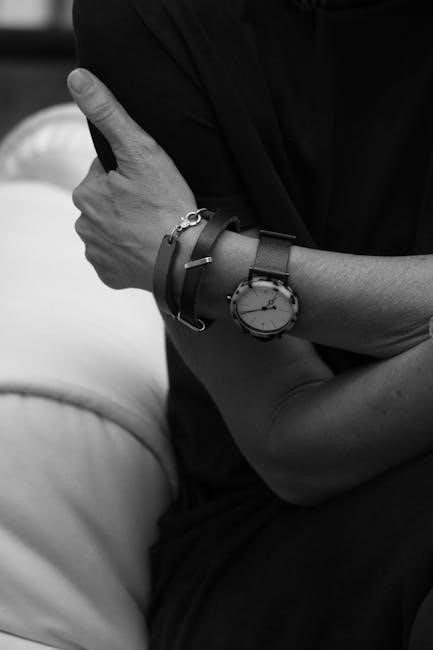
Key Components of the TLSO Brace
The TLSO brace features a rigid back panel, abdominal straps, and shoulder straps for secure fitting and spinal support, constructed from durable plastic materials for optimal stability.
Structure and Design
The TLSO brace is a custom-made orthosis designed to immobilize the thoracic, lumbar, and sacral spine. Its structure includes a rigid back panel, abdominal straps, and shoulder straps for secure fitting. The brace extends from the thoracic region to the sacrum, providing full spinal support. It is typically made of durable plastic materials and is worn over a protective shirt to prevent skin irritation. The design ensures a snug fit, with adjustable straps to accommodate individual needs and promote proper spinal alignment during healing.
Materials Used
TLSO braces are typically constructed from high-quality, durable materials such as rigid plastics and lightweight metals for structural support. The interior often features padded linings and breathable fabrics to enhance comfort and prevent skin irritation. Straps are usually made from adjustable, Velcro-compatible materials for easy fitting. Additionally, some braces may incorporate carbon fiber components for added strength while maintaining a lightweight design. These materials work together to provide both stability and comfort, ensuring effective spinal immobilization during the healing process.

Contraindications for TLSO Brace Usage
- Allergies to brace materials or circulatory issues may prevent usage.
- Pregnancy, unstable fractures, or abdominal size exceeding 59 inches are contraindications.
Medical Conditions to Consider
A TLSO brace is commonly prescribed for conditions requiring spinal immobilization, such as scoliosis, spinal fractures, or osteoporosis.
- Compression fractures in the thoracic spine may benefit from TLSO support.
- Kyphosis or abnormal spinal curvatures can be managed with a TLSO.
- Post-surgical recovery for spinal procedures often requires TLSO use.
It is essential to consult a healthcare provider to determine if a TLSO is appropriate for specific medical conditions.
Allergic Reactions and Sensitivities
Patients allergic to materials used in TLSO braces, such as plastics or metals, should avoid using them.
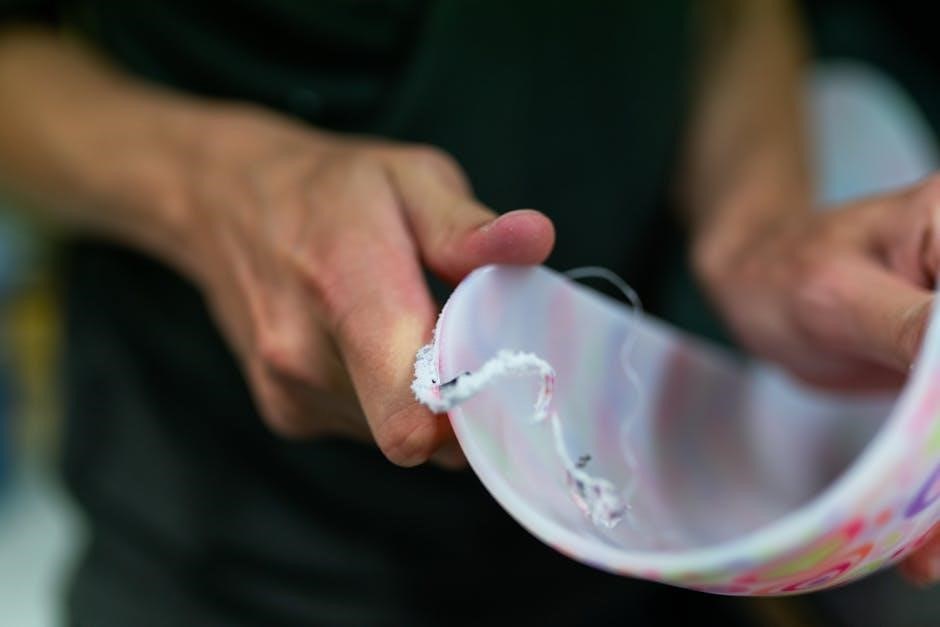
- Allergic reactions may cause skin irritation, rashes, or itching at the contact points.
- Individuals with circulatory issues or lymphatic swelling should also exercise caution.
Consult a healthcare provider if any sensitivity or allergic symptoms arise to ensure safe usage or explore alternative options.
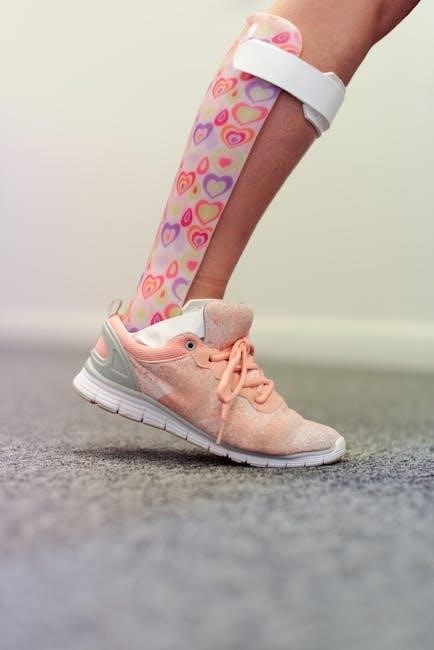
Application and Fitting Instructions
The TLSO brace is applied while lying down to ensure proper spinal alignment, often requiring assistance for initial fitting. Adjustments are made for a snug fit and proper positioning, with daily readjustments necessary to maintain support and comfort.
Preparation for Fitting
Before fitting the TLSO brace, wear a snug, breathable T-shirt to protect your skin and absorb sweat. Lie flat on your back to ensure proper spinal alignment during application. The brace is typically applied while lying down, as gravity helps relax the spine and abdomen. Position the back panel of the brace in the center of your back, with the waist groove placed low on your waist, between your hipbone and ribs. Assistance may be required for accurate placement and initial adjustments.
Step-by-Step Application Process
Lie flat on your back to relax the spine and abdomen. Place the back panel of the TLSO brace in the center of your back, aligning it with your spine.
Secure the front panel by attaching it to the back panel using the Velcro straps. Ensure the waist groove is positioned low on your waist.
Tighten the abdominal straps firmly and evenly for optimal support. Loop the shoulder straps through the chest bar buckles and secure them loosely.
Adjust the straps as needed to ensure a snug, comfortable fit. Assistance may be required for proper alignment and tightening.
Adjusting the Brace for Proper Fit
Ensure the TLSO waist groove is low on your waist, between the hipbone and ribs. Tighten the straps evenly and snugly, using the marked guidelines as a reference. If needed, tighten beyond the marks for a secure fit. Regularly adjust the brace throughout the day, especially after sitting, as it may ride up. Assistance may be required for proper tightening. Check the fit periodically to ensure optimal support and comfort, and consult your orthotist if any issues arise.
Assistance Required for Application
Initial application of the TLSO brace often requires assistance, especially for proper alignment and snug fitting. Lie on your back to apply the brace, using gravity to help position it correctly. Log rolling onto your side may be necessary for placement. Assistance is also needed when removing the brace, as it must be carefully log-rolled off. While some users may become independent with practice, others may always require help, particularly for ensuring the brace is properly fitted and functioning as intended.

Daily Wear and Care Instructions
Wear a T-shirt under the brace to protect skin and absorb sweat. Avoid bending, twisting, or lifting over 2kg. Clean with soapy water and dry thoroughly.
Putting on the Brace
Put on a clean, dry T-shirt before applying the TLSO brace. Lie down to ensure proper spinal alignment. Place the back portion of the brace first, then secure the front straps snugly. The waist groove should sit low on your waist, between the hipbone and ribs. Tighten the straps evenly, ensuring a snug fit for optimal support. You may need assistance to logroll into the brace correctly. Adjust as needed to maintain comfort and proper positioning throughout the day.
Wearing the Brace During Daily Activities
Wear the TLSO brace as instructed by your healthcare provider during daily activities. When sitting, bend at your hips and knees to avoid putting pressure on the spine. Men may find using a urinal bottle helpful while wearing the brace. Avoid twisting, bending, or lifting objects over 2kg. The brace should remain on during toileting but can be removed for showering with assistance. Sleep on your back without the brace unless directed otherwise. Regularly readjust the brace to ensure proper fit and support throughout the day.
Removing the Brace
Removing the TLSO brace typically requires assistance, especially when showering. Lie on your back and logroll out of the brace with help. Gently slide it off while maintaining spinal alignment. After removal, clean the inside of the brace with soapy water and replace worn pads. Dry the brace thoroughly before reapplying. Always put on a clean, dry shirt or stockinette before repositioning the brace. Ensure proper alignment and snugness when reapplying to maintain spinal support and comfort.
Cleaning and Maintaining the Brace
Clean the TLSO brace regularly using mild soap and water. Avoid harsh chemicals or abrasive materials that may damage the components. Dry the brace thoroughly after cleaning, preferably air-drying to prevent moisture buildup. Replace any worn-out padding or straps to ensure comfort and support. Always wear a clean, dry shirt under the brace to absorb sweat and protect your skin. Inspect the brace regularly for signs of wear or damage and schedule professional servicing if needed to maintain its effectiveness.

Follow-Up Care and Monitoring
Regular check-ups with healthcare providers are essential to monitor spinal alignment and ensure the TLSO brace fits properly and functions effectively, using data from the iButton monitor.
Regular Check-Ups with Healthcare Providers
Regular follow-ups with your orthotist or healthcare provider are crucial to ensure proper spinal alignment and brace fit. These visits allow adjustments to be made for optimal support and comfort.
Monitoring Brace Fit and Function
Regularly monitor the TLSO brace for proper fit and function. Ensure the waist groove sits low on your waist and adjust straps evenly for snug support. Check for skin irritation or discomfort, and wear a T-shirt to prevent irritation. If the brace rides up when sitting, readjust it throughout the day. Use the iButton monitor to track wear time, allowing your healthcare provider to assess adherence and make necessary adjustments for optimal spinal support and healing.
Adjusting the Brace as Needed
Adjustments to the TLSO brace should only be made by a healthcare professional or orthotist. They will assess the brace’s fit and function during follow-ups, using data from the iButton monitor to ensure proper wear time and alignment. Straps can be tightened or loosened to achieve optimal support, and modifications may be made to accommodate changes in your condition. Avoid making adjustments yourself, as improper alterations can lead to skin irritation or reduced effectiveness of the brace.

Precautions and Warnings
Avoid heavy lifting, bending, or twisting while wearing the TLSO brace. Monitor skin for redness or irritation. Do not wear the brace while sleeping to prevent complications and ensure proper healing.
Activities to Avoid While Wearing the Brace
While wearing a TLSO brace, avoid heavy lifting, bending, twisting, or engaging in contact sports. Do not sleep in the brace unless explicitly instructed by your healthcare provider. Refrain from activities that cause discomfort or strain on your spine. Avoid sitting for prolonged periods without adjusting the brace to prevent misalignment. Additionally, do not remove or adjust the brace without professional guidance. Always consult your healthcare provider for specific activity restrictions tailored to your condition.
Warning Signs of Complications
Monitor for signs of complications while wearing a TLSO brace. Increased pain, numbness, tingling, or weakness in the legs may indicate nerve compression. Skin irritation, redness, or open sores under the brace suggest poor fit or allergic reactions. Difficulty breathing or abdominal discomfort could signal improper brace tension. If the brace feels too tight or misaligned, seek immediate medical attention. Regular monitoring and adjustments are crucial to prevent long-term complications and ensure proper healing.
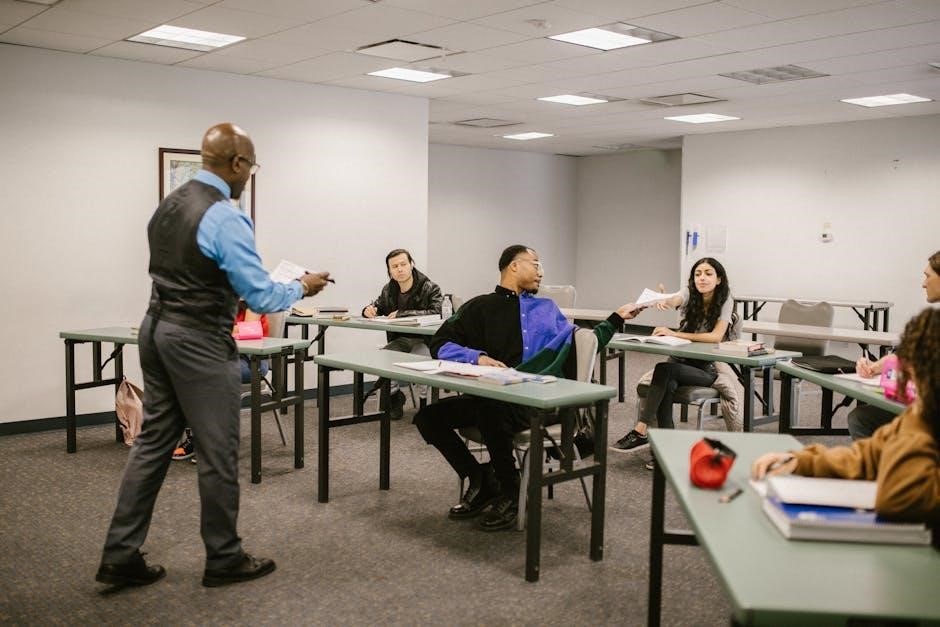
Troubleshooting Common Issues
Address common TLSO brace issues promptly. Discomfort or skin irritation may require adjustments. If the brace malfunctions or fits improperly, consult your orthotist for repairs or modifications.
Discomfort or Skin Irritation
Discomfort or skin irritation may occur due to improper fit or prolonged wear. Wear a snug, breathable T-shirt under the brace to reduce friction and absorb sweat. Check your skin daily for redness or sores. If irritation persists, consult your healthcare provider for adjustments or padding solutions. Proper fit and regular inspections are essential to prevent complications and ensure comfort during the healing process. Addressing these issues early can help maintain the effectiveness of the TLSO brace treatment.
Brace Malfunction or Damage
If the TLSO brace malfunctions or shows signs of damage, discontinue use immediately. Inspect for cracks, broken straps, or loose components. Contact your orthotist or healthcare provider for repairs or replacements. Avoid attempting DIY fixes, as this could compromise the brace’s effectiveness. Regular check-ups can help identify potential issues early. Proper maintenance ensures the brace functions correctly, providing the necessary support and protection for your spine during the healing process.
Adhering to TLSO brace instructions ensures proper spinal support and healing. Consistent use promotes long-term stability and prevents complications, fostering a successful recovery process.
Importance of Adherence to Instructions
Adhering to TLSO brace instructions is crucial for optimal spinal support and healing. Proper use ensures the brace functions effectively, promoting stability and alignment. Neglecting guidelines can lead to discomfort, skin irritation, or delayed recovery. Consistent wear as prescribed by your healthcare provider is essential to achieve the best outcomes. Regular follow-ups and adjustments ensure the brace continues to meet your needs, preventing complications. By strictly following instructions, you safeguard your spinal health and support a successful recovery process.
Long-Term Benefits of Proper TLSO Usage
Proper use of a TLSO brace promotes long-term spinal stability and alignment, reducing the risk of deformities. It supports healing after surgery or injury, preventing further complications. Consistent wear as directed helps restore spinal strength and flexibility. Over time, this can improve posture, reduce chronic pain, and enhance overall mobility. Adhering to usage guidelines ensures lasting benefits, supporting a full recovery and maintaining spinal health for years to come.
